The NFL Draft is largely mundane, yet fans can’t look away
Last year, the NFL college draft drew in record ratings from American audiences. James Moore explains why fans spend hours watching the three-day event in which the action is over in a matter of seconds

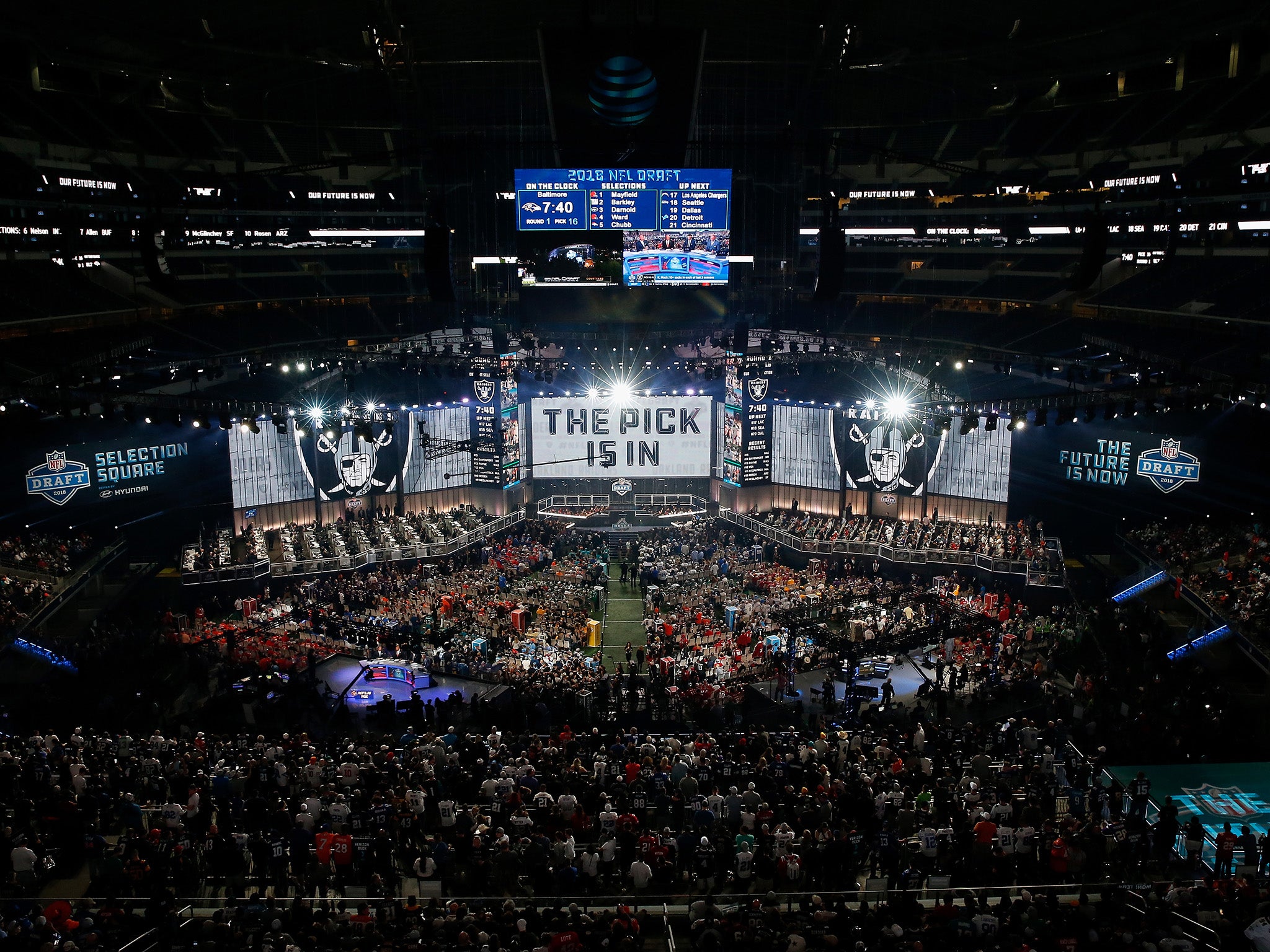
It’s the Super Bowl of the NFL off-season. Last year’s annual college draft was televised on three US networks and drew record ratings for them, averaging an impressive 5.5 million viewers over the three days of the event. The all important first round that ran in prime time on a Thursday night drew 11.2 million.
Now compare that to game six of the Boston Celtics – Milwaukee Bucks NBA playoff series, featuring actual competition involving actual players with something at stake. Going head to head with the draft, it drew just 2.4 million.
The NBA finals in June managed 18.5 million, a mite disappointing but unsurprising given the one-sided nature of the series (the Golden State Warriors swept LeBron James and the Cleveland Cavaliers). But still.
The draft’s ratings were also comfortably ahead of the NHL’s Stanley Cup Finals, although ice hockey ranks a distant fourth in terms of the popularity of America’s major sports.
Now consider what the 11.2 million draft fans were actually watching when they tuned in.
Each of teams involved in the first round gets fully 15 minutes to make their selections, which means the event can, and does, take hours to complete. It’s 10 minutes for rounds two and three on Friday, and five minutes for the four later rounds on Saturday.
The announcement of each pick – the “action” – is over in a matter of seconds.
Major League Baseball is in a funk over the pace of the game, with the ball actually in play for maybe 15 minutes over the course of more than three hours. It’s imposing rule changes in an attempt to speed things up, fearing millennials will switch off the game if it doesn’t.
But compared to the NFL Draft even its most drawn-out contents look like the Olympic 100m final.
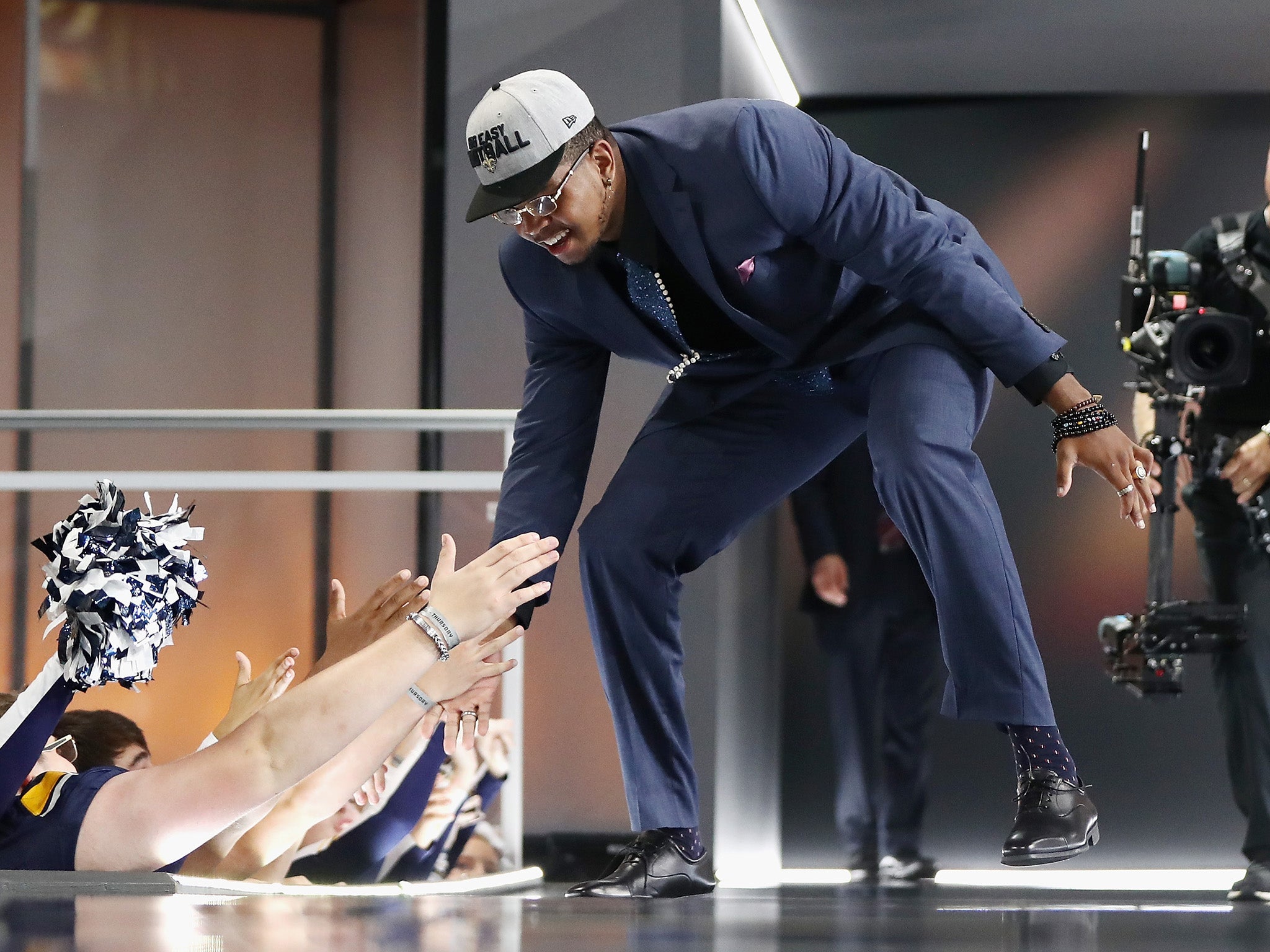
How has this happened? Why do so many American sports fans, and not a few Britons, and other international NFL obsessives such as myself, spend so much time watching an event made up chiefly of lots and lots of dead space?
“It’s driven by hope,” says Peter O’Reilly, the senior vice president of events at the NFL, who has been with the league for 13 years, playing a key role in making the event what it is today.
“We have such parity in the NFL. OK the Patriots have been very successful, but you have so many examples of teams being rebuilt through the draft. No one wins or loses on draft day itself so everyone feels a connection and all 32 teams are involved.”
That’s a point picked up by Lindy’s Sports UK editor Simon Milham. “The biggest non-event in sports is the Premier League Transfer deadline day,” he says. “A yellow tie and boundless enthusiasm, attempting to play up the merits of average players and loan deals does not cut it, I’m afraid.
“The NFL Draft, on the other hand, is unique. The draft and the scouting combine before it are things of beauty. The possibility that one or two players will be able to help your team rise from a losing record to the playoffs the following season is a real one, because it happens. Parity exists in the NFL. There are fine margins and a limited 16-game regular season where every game matters.”
It’s a great way to level the playing field. Every team has the prospect of coming out of the NFL Draft with a star player added to their roster
Parity is, of course, a key aim of a draft that allocates the first pick of the college players who declare (they have to be three years out of high school) to the worst team, and proceeds through the league in reverse order with the Super Bowl winner picking last in each of the seven rounds.
This doesn’t prevent teams like the aforementioned Patriots from winning consistently, or the likes of the Cleveland Browns and the Oakland Raiders from losing most of the time. You still have to pick the right players.
But it’s thanks to the draft that Browns fans can finally see some light at the end of the tunnel now that they have quarterback Baker Mayfield, last year’s number-one overall pick, running their offence.
“It’s a great way to level the playing field. Every team has the prospect of coming out of the NFL Draft with a star player added to their roster. And you never know where you are going to find that player,” says Sky Sports NFL expert Neil Reynolds. “Patrick Mahomes was a first-rounder who has gone on to enjoy great success with the Kansas City Chiefs but talent can also be found in later rounds, most notably with (New England Patriots quarterback) Tom Brady (sixth round in 2000) or wide receiver Antonio Brown (sixth round in 2010).”
The latter was drafted by the Pittsburgh Steelers but forced a trade to the Oakland Raiders in what has been an unusually entertaining start to the new NFL year.
O’Reilly believes that draft’s springtime setting – this year’s will kick off on 26 April – further fuels its popularity.
As the days lengthen, and the sun appears more regularly, people are in the mood for a party. The draft has turned into one, particularly with its having gone mobile.
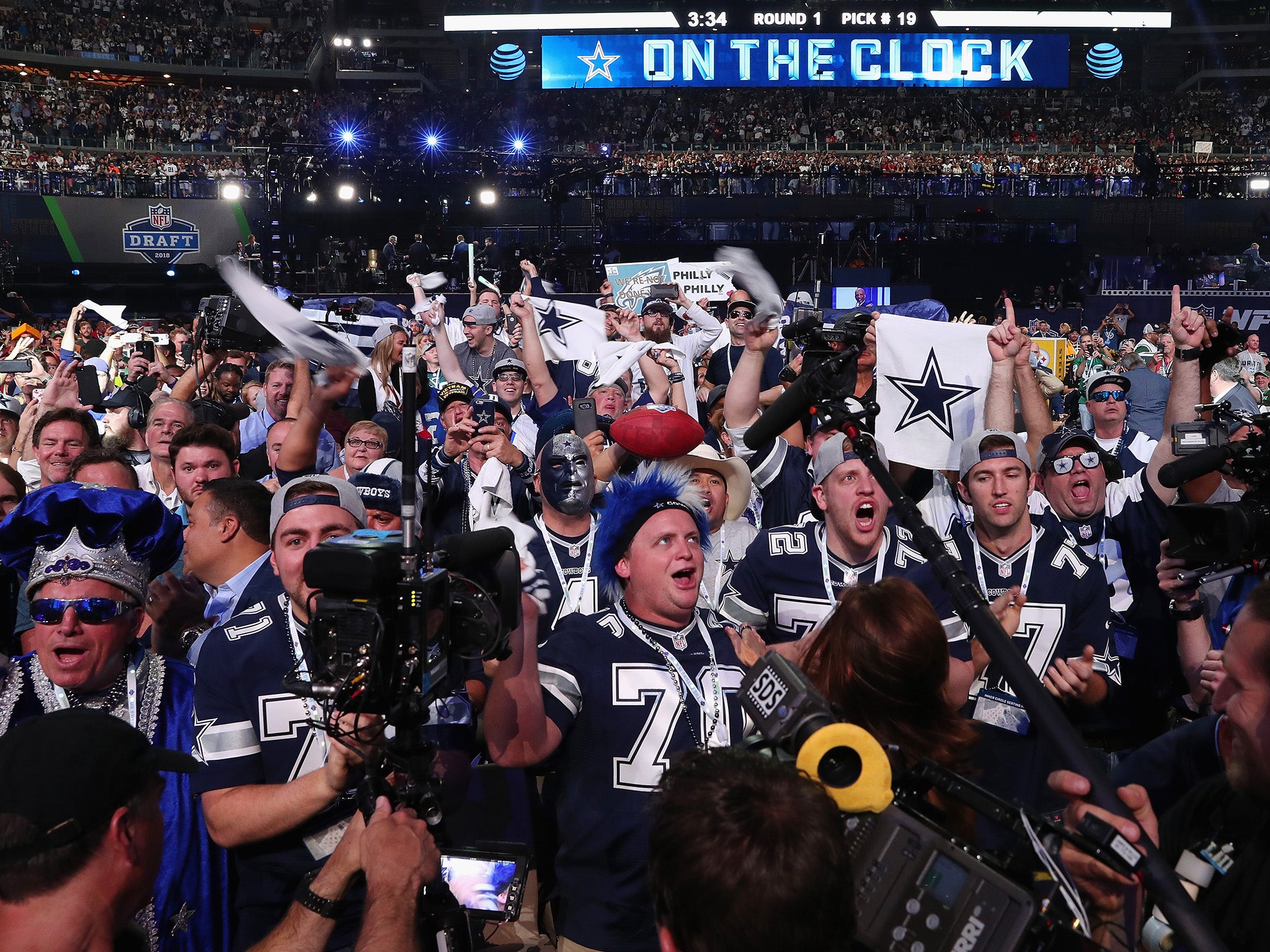
Taking it out of its traditional New York home and moving it around the US has proven to be a masterstroke.
It was always closely watched, even when the league was building its power, following the merger with the AFL at the end of the 1960s. But it used to consist of a group of executives sitting around in a New York hotel room making phone calls made up with their teams’ logos; hardly the sort of thing to excite a TV executive.
The decision to mobilise it, and have cities bid for it, as they do the Super Bowl, has given the NFL’s planners the facility to let their creativity run wild, as well as providing the league with a nice windfall.
“Since we made the decision to leave New York and bring the draft to different fans and turn it into a big free celebration of the game, it really has taken off, drawing hundreds of thousands of fans,” says O’Reilly.
“It has a lot of similarities to the Super Bowl. I wouldn’t say they are on the same par but the [pre-draft scouting] combine is the start, and the draft is a big part, of the journey that ends with the Super Bowl.
“It’s a very different vibe. You see fans of all 32 teams. It is free and accessible and there’s a camaraderie. Spring is in the air and everyone is feeling good. It is this oasis that everybody gathers around.”
O’Reilly points to efforts to ensure that each event “takes on the style of the market we are in”. So this year, in Nashville the music city, there will be music on stage. In 2020 when Las Vegas will be the venue, there will be events along the famous strip as the league heads into the season when the Raiders are scheduled to make the city their home.
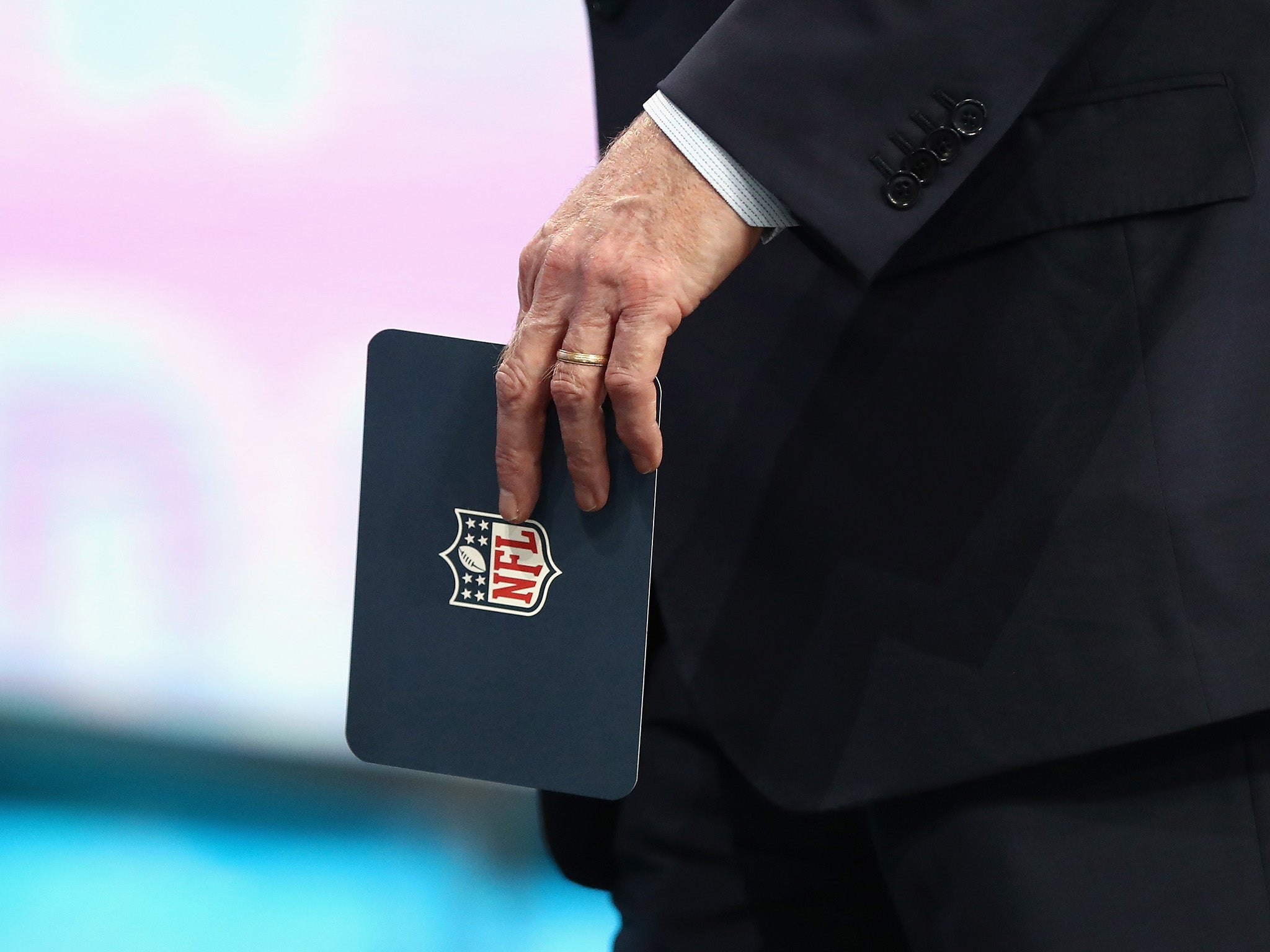
“This year you will see a different energy and more access,” O’Reilly says. “We have started to treat it like a political convention and so there will be a delegation of 50 fans from each team invited to what we call the inner circle. When a prospect is picked they will greet the fans and take a selfie with them. The draft really lets us push the envelope.”
Attaching this sort of razzamatazz to what was once a relatively low key event is something few sports would be able to pull off. Most wouldn’t have even dared to try.
But razzamatazz that will only get you so far with the TV people. What the league has also sought to exploit and develop is the storytelling aspect to give its broadcast partners something to draw in viewers.
In many ways you can see echoes of reality TV in the way these are presented.
The fan is invited to live the dream alongside young men who have invested everything into reaching the pinnacle of their sport, young men who are often celebrities through their exploits in amateur college football, just without the financial trappings that usually come with it.
Not for nothing did Texas QB Sam Ehlinger describe the college game, which turns over billions of dollars every year with everyone but the players getting a piece of the pie, as a “three-year unpaid internship”.
Says Reynolds: “There is a great deal of drama attached to each NFL Draft and it plays out in a very public way with the top prospects sitting backstage waiting to hear their name called. That can lead to some awkward on-camera moments as a player expected to go high in the draft is forced to sit and wait for sometimes hours on end before finding out where he will play in the NFL.
“Also, the NFL Draft is the culmination of a lifelong pursuit for so many players. To become one of the best of the best is an amazing feeling for a young player as so few ever make it as far as the NFL. Seeing players react to hearing their names called is a wonderful thing. But the main drama comes in speculating upon which team is going to take a certain player, along with the in-draft trades that can happen throughout the seven rounds.”
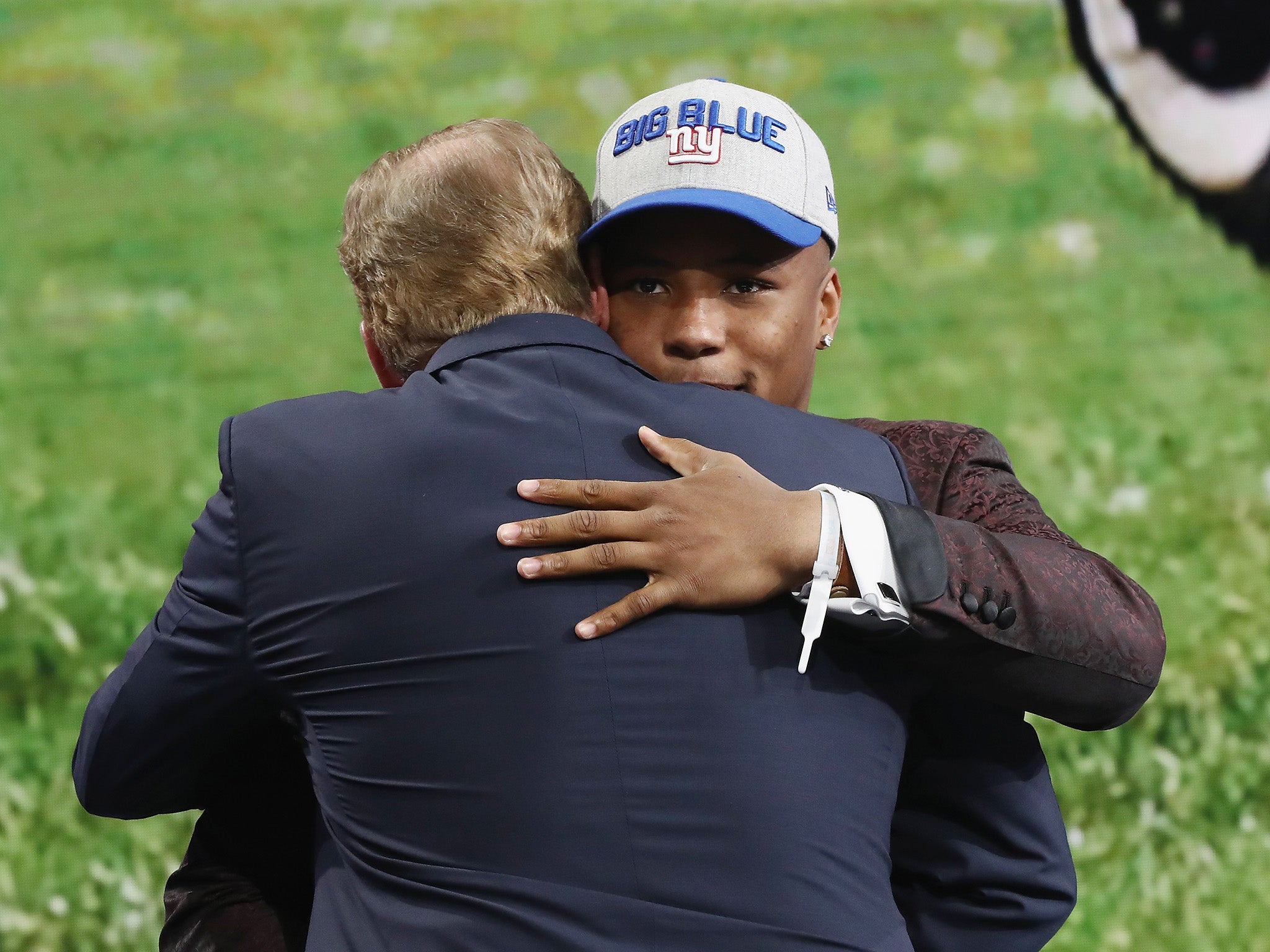
O’Reilly says: “College football is a massive property in this country and growing beyond it. The stories of these prospects are told through their college journey. You want to see how that ends.”
This can be found right down through the draft.
O’Reilly highlights one of last year’s best stories; that of Shaquem Griffin, who had his left hand amputated at the age of four after being born with amniotic band syndrome. Griffin ultimately went in the fifth round, making him the 141st selection overall, to the Seattle Seahawks where his brother was already playing. He led the team in tackles in 2018.
“This year ABC is very focused on storytelling, talking to players moms for example; it starts to draw in people from a wider base,” he says.
Those stories are given added spice by the intrigue and skullduggery that goes on in the background. The draft wouldn’t be the draft without that.
Fake news is a vastly overused term, but much of the what is written and broadcast in the run up to it is just that.
Anonymous NFL scouts or team executives will be some of the prime sources of stories over the next few weeks. They’ll be quoted picking holes in the games of the top prospects, making insinuations about their characters, highlighting “red flags”.
Quarterback Kyler Murray, who may go first off the board, has already had his performance in interviews with teams at the scouting combine trashed.
There’ll be a lot more of that sort of thing cropping up between now and the draft proper as the media indulges in the game of build ’em up, knock ’em down when it comes to the top prospects.
Teams have an obvious interest in briefing against players they love in the hope of putting rivals off rivals picking higher. Some find it hard to resist indulging it.
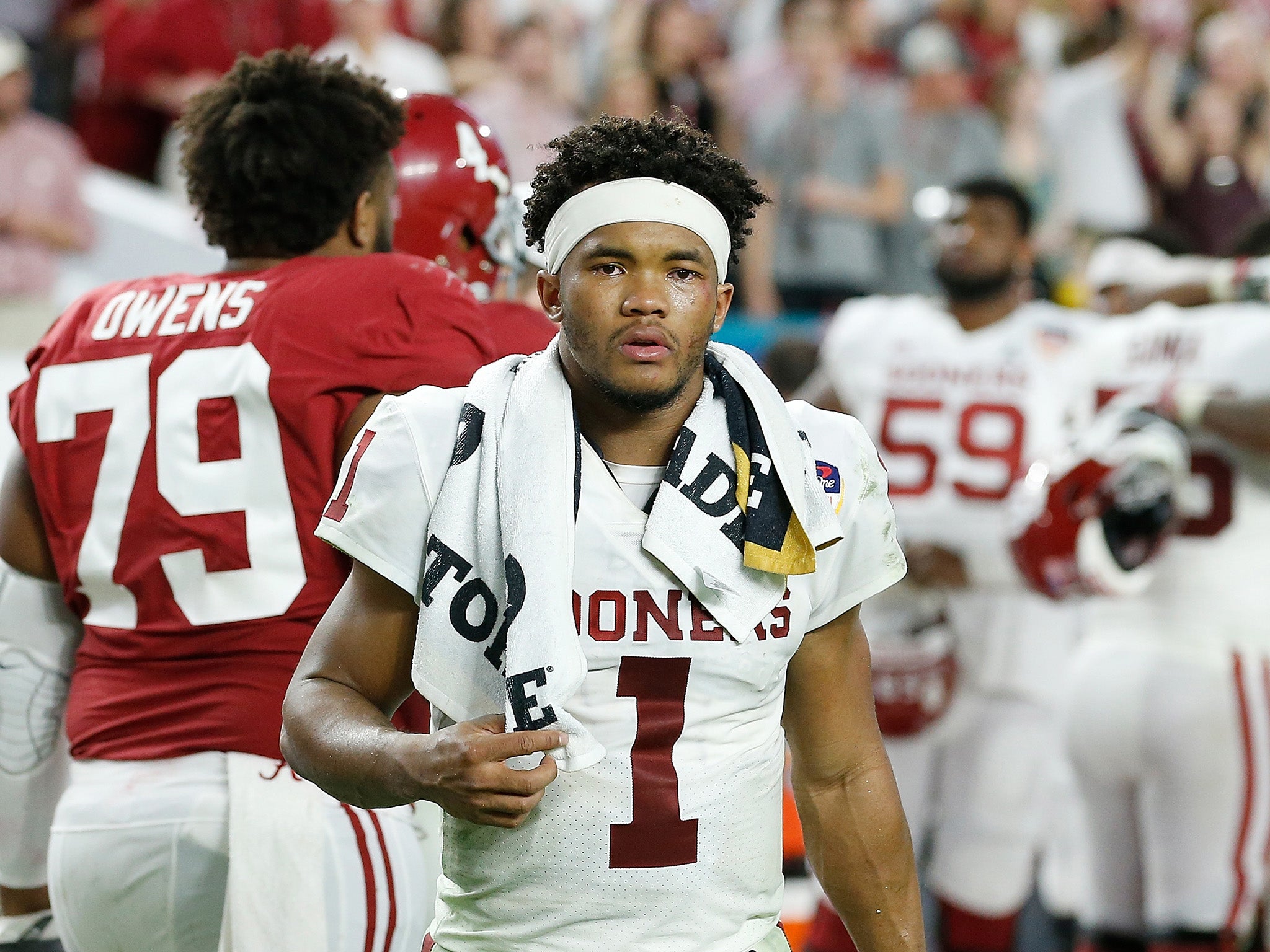
Fan appetites are further fuelled by the publication of “mock” drafts. There will be a new one virtually every day now the big free-agent contracts have been handed out and the draft starts to take centre stage.
Compilers base their predictions on a mix of whom they think teams will pick and whom they think they should pick. Sometimes major news outlets specify which one of those they are leaning towards. Sometimes they don’t. Big names in the sports media who have access to teams and their executives – people like ESPN draft guru Mel Kiper, or the doyen of NFL journalists, NBC’s Peter King – are particularly closely watched.
The rumours and speculation will reach fever pitch in the few days before the event proper. There’s even more spice added to the mix on the day when teams start trading picks with each other, moving down for extra selections, or up to get the missing piece a they feel will lead to a Super Bowl appearance.
Murray is the name on everyone’s lips this year. The former first-round pick of the Oakland A’s in baseball’s much lower key draft, he declared for the NFL after completing a season as starter for the University of Oklahoma, a concession afforded to him by his baseball contract. The NFL will afford him the opportunity to make more money upfront; he won’t need to spend years toiling in the minor leagues and could get a big-money second contract in four years if he’s good enough. His college tape indicates that he could be, although you can never really tell. The draft is, when all is said and done, something of a crapshoot. Some teams are just better at it than others.
The one that gets Murray will have an electrifying prospect on their hands, a player who is equally effective as runner as he is a passer. That’s rare. Quarterbacks usually major on one or the other but not both.
The main knock on Murray is that he’s only just over 5ft 10in, which makes him the smallest starter in the league. The only other sub-6ft passer is the Seattle Seahawks’ Russell Wilson. Murray’s slight build also worries some scouts (Wilson is built like a pocket battleship).
Many expect him to go first overall to the Arizona Cardinals, despite their having traded up to select Josh Rosen in the first round of last year’s draft, because he’d be an ideal fit for the offence preferred by new coach Kliff Kingsbury.
The latter said he’d pick Murray first if he had the choice while coaching at Texas Tech.
He doesn’t have that choice even now he’s in the NFL. The Cardinals’ pick will be made by his general manager Steve Keim. But it’s hard to imagine him not getting Murray if he wants him.
The other quarterback to watch is Dwayne Haskins, who fits the more traditional archetype and has a howitzer of an arm. He’s seen as an ideal fit for the more traditionally minded New York Giants who need to find a long-term replacement for Eli Manning. They have two first-round picks after trading star receiver Odell Beckham Jr to the Browns.
The Miami Dolphins are also short handed at the game’s key position and Denver could do with help even after trading with the Baltimore Ravens for the declining Joe Flacco.
As much as quarterbacks always get the attention, there is also an embarrassment of pass rushing riches in this year’s music city draft, headed by Nick Bosa, seen by most analysts as the best overall prospect. If he can stay healthy he’ll be frightening quarterbacks for years.
The Oakland Raiders are the big X factors. They have three pick in round one, having traded two of their best players, Khalil Mack and Amari Cooper, for the first round selections of the Dallas Cowboys and Chicago Bears.
No one’s quite sure what their mercurial coach Jon Gruden and his general manager Mike Mayock, a former TV analyst, will do. They badly need a pass rusher to replace Mack. But Gruden has also spoken of his love for Murray, despite having a veteran starting QB in the form of Derek Carr. Could they trade up with the Cardinals? Gruden likes to deal and he probably will, only adding to the drama.
With all that and more in the mix, O’Reilly and his bosses have good cause to feel optimistic about the ratings. There will be a lot of their beloved stories for a football crazy media to feast on, and draw viewers to one of the various live broadcasts (Sky will join in the fun through the early hours on this side of the pond).
“Possibility over the proven commodity is engrained in our psychology,” reflects Milham. “Premiums are paid for potential rather than achievement in many walks of life, which is absurd when you think about it, but it’s always there.”
As for the event’s future, London could one day be calling. Not soon. But the NFL’s interest in globalising the game remains strong.
“We have seen and we expect to see more players coming into the draft from outside the US who are incredible athletes,” says O’Reilly.
“I wouldn’t rule it out. Theres such strong interest from US in hosting. We’ve been in New York for 51 years and there are 20-plus markets wanting to host it to focus on.
“But there has been so much success we have had with the games in UK, and Mexico. We certainly think about opportunities to reach international fans. It’s not imminent but its not far-fetched.”
Join our commenting forum
Join thought-provoking conversations, follow other Independent readers and see their replies
Comments